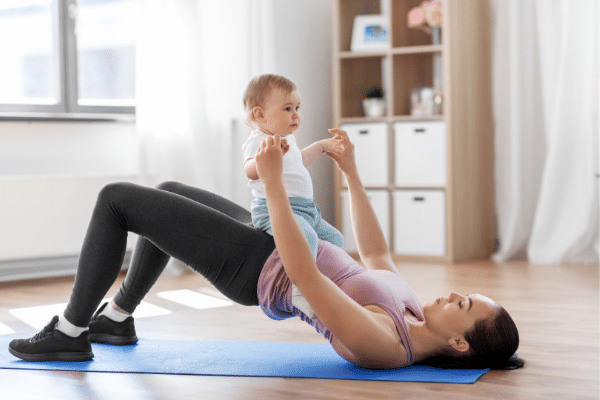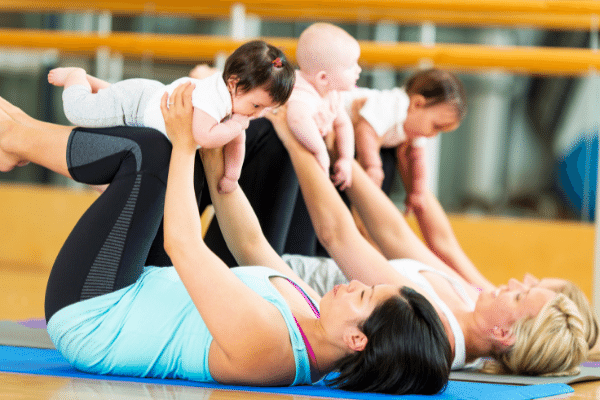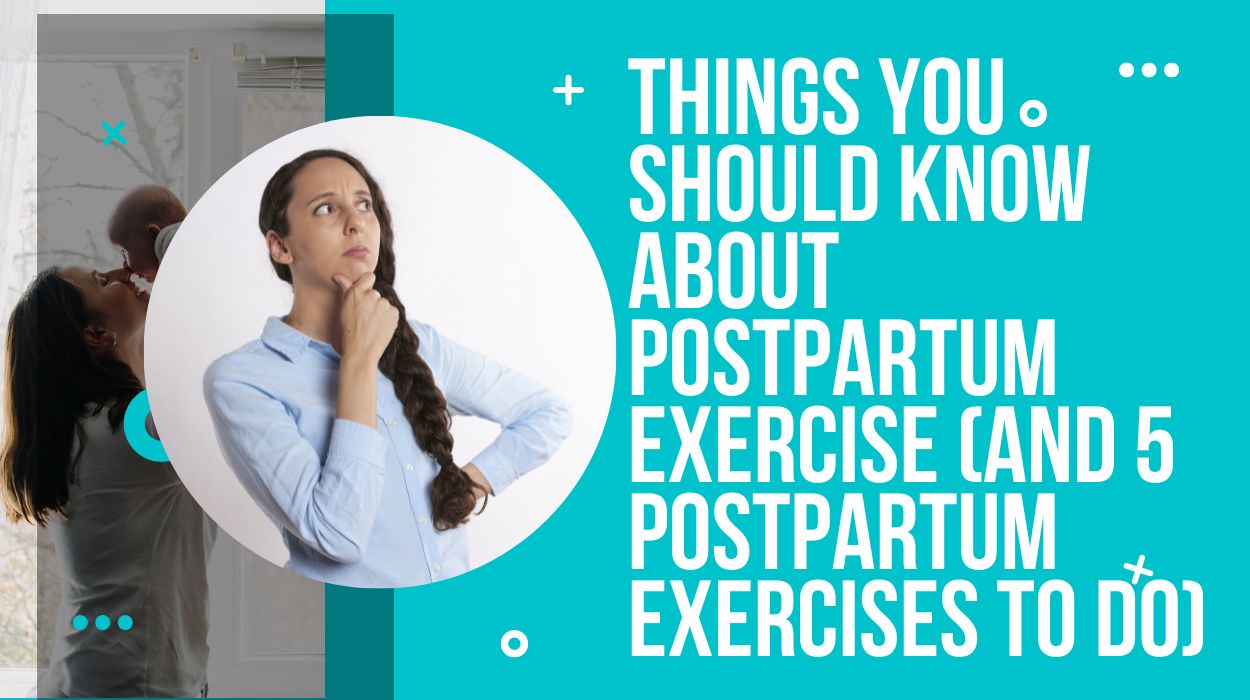Let’s learn a bit about the postpartum journey of new motherhood. Postpartum is one of the hardest things a mother can go by. It is absolutely one of the most precious moments for a woman, but just like everything else in life – it does not come without some bumps along the way. It is a transition from pregnancy to new motherhood so huge that it is sometimes hard to comprehend. If you are going through this time, or know someone who is going through this, then you are not alone.
Every new mother has to go through a list of struggles that come with postpartum. Slowly, they are overcome and life goes back to normal. But there are things you should know before you get into the journey of motherhood.
What happens during this transition?
The first couple of days after birth it is a common feeling for women to feel detached, almost out of body experience, because the physical body is going through so many changes that it is not able to deal with such a huge amount of information. Here are some more things you should know:
From day one after birth, your uterus starts shrinking back to its original size (the size it was before the pregnancy), which means bleeding (lochia) will occur. It differs from woman to woman, but the average bleeding is between 5-10 days. The amount of lochia varies from woman to woman. However, if you did not experience any bleeding after a week, it would be a good idea to consult your doctor.
You may feel scared of this massive bleeding that comes with postpartum – but do not worry! In fact, the blood is healing and cleaning the uterus. The product of lochia is old blood – it does not contain any bacteria or anything like that that can cause infections in your body. You can wear a pad or panty liner or just some tissues or toilet paper to absorb the flow – it is normal and it will stop when your body heals.
Here’s to summarize it all:
- After childbirth, your uterus is healing but it may still have contractions
- Your body will start experiencing new hormones after birth and some can cause cramps
- More women are finding that postpartum exercise helps them with key nutrients such as calcium, iron, zinc, and Vitamin D
- Many mothers feel empowered by the mental and physical boost they get from exercising
- Postpartum exercise also allows you to better bond with your baby because you’re exercising together
- Exercise has numerous benefits for mother and baby including better weight control and strong bones for baby plus the decreased risk of breast cancer for the mom
How is postpartum exercise good for your body?

Postpartum exercise can help you regain your strength to prevent additional pregnancy complications. It can also help you get back into shape as fast as possible.
Here are some of the advantages of doing them:
1. Helps you to work on your self-confidence:
Doing exercises such as Pilates and Yoga can help you to work on your self-confidence. It is in fact very important to feel good about yourself if you want to breastfeed your baby.
2. Helps you to lose weight:
Postpartum exercise helps you lose weight, especially if it is done right after childbirth.
3. Prevents loss of strength:
If you do not do exercises immediately after the baby is born, you might lose strength and muscle mass because of the breastfeeding process or because of lack of sleep due to the lack of a partner. If this happens, it will be harder for you to get back into shape again after pregnancy.
4. Helps you to feel better:
Doing exercises helps you to feel better and boosts your mood. It has also been shown that women who perform regular exercise have a lower risk of depression in the long term. Conversely, if mother-infant bonding is disrupted, they will have a higher risk of developing depression. They can become “stuck”, unable to perform their daily tasks or find it difficult to cope with the demands of caring for a family and taking care of newborn children.
5. Prevents future pregnancies:
Women who exercise regularly before and after giving birth, who are able to get back into shape very quickly, have a lower chance of being pregnant again after one or two years. You will be more fit and able to provide optimal care for your baby. There is also evidence that women who have been exercising in their twenties may not conceive until they are in their thirties.
6. Increases the chance of breastfeeding:
Exercising helps you breastfeed more easily and will make it possible for your body to produce more milk quickly and efficiently.
The following guidelines are shown to help you

You should not feel discouraged if you can not start exercising immediately after childbirth. If you do exercises that are comfortable, get started as soon as possible.
1. Start with small amounts:
There is no need to lift a heavy object right after childbirth. Small exercises are best for the body and will help make them more resistant to future injuries and infections. Do easy and light movements right after pregnancy, but never too much or too vigorously. Start very small and progress gradually over time until you can do larger exercises that were previously impossible. Try to do different kinds of activities day by day, according to the intensity of your baby’s movements.
2. Focus on strengthening the muscles:
Most of your workouts should focus on strengthening the major muscle groups and toning your body. Beginning a fitness program immediately after childbirth is not a good idea, especially during the first six weeks after childbirth. This is because you are most prone to developing infections at this time, which could make you feel worse than ever before.
3. Do moderate physical exercise:
It is best to do moderate physical exercise and avoid excessive training, which can stress your body too much and lead to injuries or complications during pregnancy or right after childbirth. You should do daily walks instead of jogging. You might also try other exercises that can help you get back into shape. For example, swimming or water aerobics, which can be done as early as eight weeks after childbirth.
4. Do not overdo it:
When you try to do higher-intensity exercise, do not go too far or too fast, and try to stay within your limits. If you feel tired or sick, stop immediately and wait until the next day to exercise again. It is better to start slowly and build up than try to do too much at one time. Avoid overtraining for a long time because the stress will cause your body to produce more cortisol, which is bad for your health in general.
What are some types of postpartum exercise?
There are a number of exercises that may be best for postpartum fitness, including walking, bicycling, low-impact aerobics (such as Zumba), yoga, Pilates, and swimming. For suggestions on what to do during the first days after birth, consult with your doctor and a certified professional trainer or an exercise physiologist during pregnancy. Ask about the best exercises before having a baby and plan ahead.
Let’s take a look at the following:
1. Pilates:

Pilates looks at the body in a series of postures that focus on the core (or trunk), as well as on all the muscles around the joints of the body. Pilates prepares you for your new life with a special core and muscle group program that can be done together with your baby when he or she is still in your belly.
2. Walking:

It is recommended to walk at least 30 minutes a day, 5 days per week for about three months after childbirth, especially if your baby was born very premature or weighed less than 3 pounds (1.4 kg). Exercise triggers hormones and nerves that will help you feel better faster.
3. Bicycling:

The best kind of activity for postpartum recovery is cycling, which has been proven extremely functional over the last 50 years for male and female athletes. It provides a natural form of exercise that can be done comfortably by those who are recovering from childbirth and other pregnancy-related injuries. By adding a bit of resistance with either gas or electric bikes, you can tone your muscular endurance and strength at any stage of your pregnancy or after you deliver your child.
4. Cardio:

Cardio workouts are a great way to burn calories and stay healthy. It is better for you than heavy weightlifting for postpartum recovery, as well as for pregnancy in general. Cardio exercises are easy and accessible for anyone to do at any time, however, when you are pregnant, it is best to use cardio machines that do not put too much stress on your body. Ask your doctor what kind of cardio machine can be used safely during pregnancy with your current condition and if it will provide the best results.
5. Yoga:

Yoga is a great way to work on strength, flexibility, and balance by doing the postures in a gentle way that helps keep you pain-free after childbirth. Most women are surprised to feel stronger, lighter, and more flexible after doing yoga. Yoga should be used to recover your energy and body, but not as a replacement for medical advice or care from your physician.
You May Also Like To Read:
Essential Supplements for Women
Best Upper Body Exercises for Women
Simple Fat-Burning Exercises for Women
Conclusion
While it is important to listen to your doctor and your body, it is also important to try some gentle exercise right after childbirth. Certain exercises can help you get back into shape and recover faster. But remember that the best exercise for postpartum recovery is walking in places you feel comfortable, such as the mall, park, or nearby trails. Be sure to drink plenty of water before, during, and after your walk. And if you feel dizzy or like passing out, stop immediately and take a break until you feel better.


